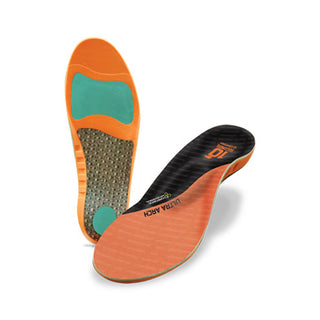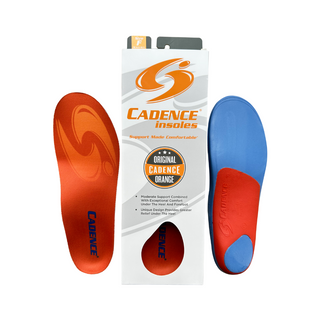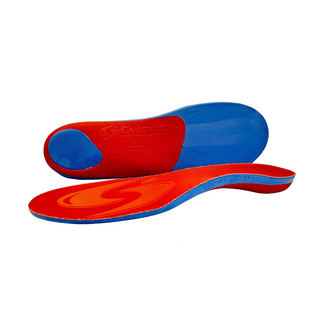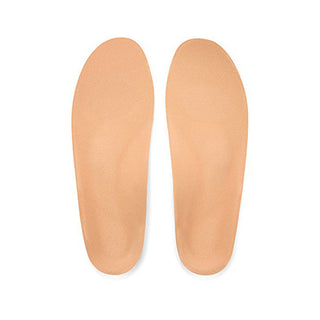Ankle Pain
Recommended for Ankle Pain
View allWe’ve all felt it.
From a sharp pain to a dull ache, sometimes things just don’t feel quite right with your ankle.
Ankle pain is a broad term for a number of conditions that can cause pain and inflammation in the ankle.
Most commonly caused by injury or arthritis, ankle pain can cause serious discomfort with every step, putting a stop to your daily routine or favorite activities. Sometimes it’s mild and means an afternoon with your feet up on the couch; other times it could be a sign of a more serious condition that needs to be addressed.
Ankle pain often resolves itself if the underlying issue is minor. Usually rest, ice, and elevation will do the trick however there are cases where physical therapy and even surgery are needed.
What causes ankle pain
Ankle pain is a broad condition that can have a number of different causes. This list is by no means exhaustive, but these are the most common culprits of ankle pain.
Achilles tendonitis: Achilles tendonitis is a painful overuse injury in the heel. Often caused by excessive walking or exercise, this results in mild to severe pain in the heel reaching up to the ankle.
Arthritis: Arthritis is a broad condition caused by inflammation in the joints. Arthritis has many causes (age, injury, conditions such as gout) and results in stiffness and pain in the joints including the ankle.
Bursitis: Similar to arthritis, bursitis is inflammation in the joints. Where arthritis is caused by joint stiffness from cartilage breakdown or gout, bursitis is caused by inflammation of the bursae (fluid-filled sacs in the joint). This results in pain, stiffness, and swelling. Bursitis of the heel can result in ankle pain.
Flat feet: Flat feet is a condition where the arch in the foot is very low or non-existent, this can result in excess levels of stress on the foot and ankle.
Fracture: Fractures can occur due to a sudden injury, or repeated overuse that results in stress fracture in the foot or ankle.
Gout: Gout is a painful form of arthritis caused by a buildup of uric acid in the joints. Gout is commonly found in the foot though it can occur in the ankle causing pain.
Sprain: Sprained ankles are extremely common injuries caused by a sudden roll or twist of the ankle. Severe sprains can result in tears of the ligaments, though most often sprained ankles can be treated with rest, elevation, and ice.

Ankle pain can have a variety of causes, it's important to rest and consult a doctor if pain persists.
How to relieve ankle pain
Due to the variety of causes of ankle pain, it’s best to consult a medical professional to correctly diagnose the cause. Still, there are a variety of remedies you can try to manage/reduce pain.
Rest, Ice, Compression, Elevation
Commonly abbreviated as RICE, rest, ice, compression, and elevation are effective at reducing inflammation. This can ease pain and treat minor injuries getting you back on your feet in no time.
Pain medication
Over the counter pain medication is effective at managing pain and reducing inflammation which can help you heal faster.
Insoles
Non-supportive footwear leads to instability and injury for your ankle. A great way to manage pain and heal or prevent injury is to add stability by adding supportive insoles to your shoes.
When to consult a doctor
You should consult a healthcare professional if:
- Your ankle pain is brought on by a sudden injury and persists/worsens
- Ankle pain does not go away after 3 days of at home treatment
- You experience severe pain when walking
Can insoles help with ankle pain
Insoles can definitely help manage or prevent ankle pain for minor injuries.
Obviously insoles won’t fix a broken ankle, but supportive insoles add stability which can prevent a variety of injuries such as gout or tendonitis. The fact is, while most footwear looks nice and compliments your outfit it often leaves support and stability out of the conversation. Shoes that lack support add stress to your ankle, which over time will result in injury.
When choosing insoles for ankle pain, look for an insole that has a deep heel cup. This will cradle the heel and help provide stability for the ankle while still supporting the arch.
It is also best to combine your insoles with a structured shoe that is not too soft, flimsy, or bendy. This will allow the insole to function properly in providing support for your ankle and foot.

Insoles may be helpful in releiving ankle pain or preventing conditions tha cause pain in your ankle.
Can insoles prevent rolled or sprained ankles?
Rolled or sprained ankles are often caused by chronic ankle instability, a condition where the ankle gives way to the outer side when walking. This condition develops over repeated strain on the ankle, resulting in an ankle sprain or rolled ankle.
Though they are not guaranteed to prevent a sprained ankle, insoles can help to prevent the ankle from rolling by providing support to the heel and arch. Shoes also play an important part in preventing ankles from rolling. Wearing supportive shoes will also help to prevent the ankle from rolling, try a firmer shoe rather than a flimsy, flexible one.








